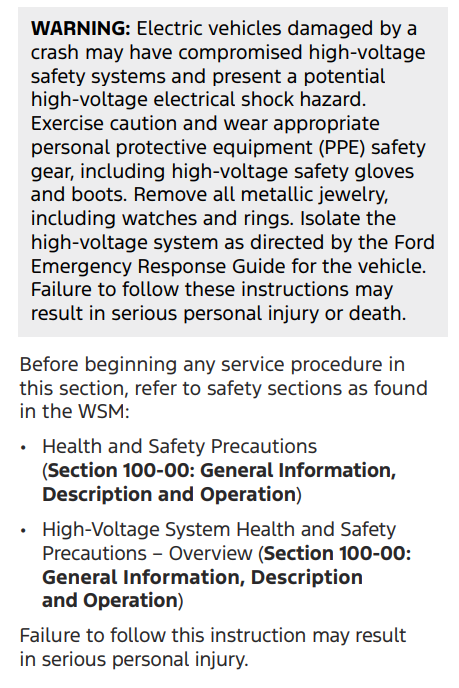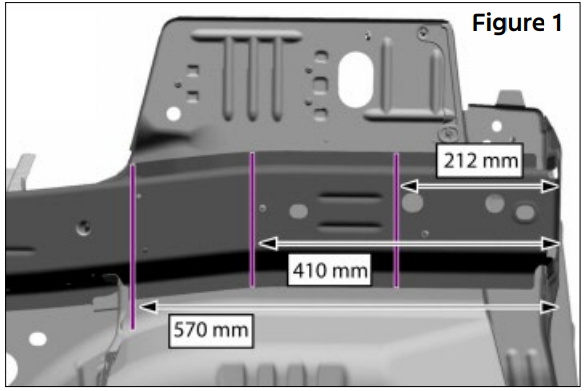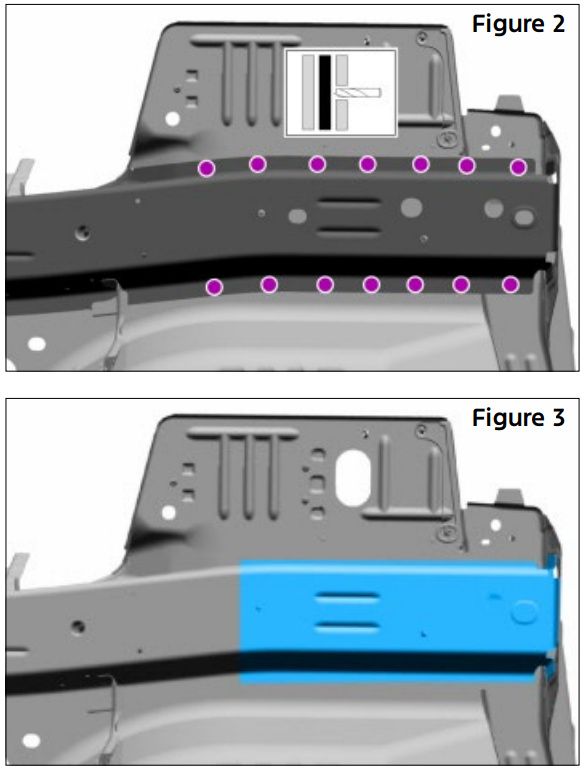
Ford provides procedure for newly repairable Lincoln Aviator component
By onAnnouncements | Collision Repair | Repair Operations
Ford has released repair procedures for a previously replacement-only component on the Lincoln Aviator, and details on plastic repairs.
In the latest edition of Ford’s On Target newsletter, Gerry Bonanni, Ford senior damageability engineer, said field service requests were received for Aviator rear-side member section repair.
“We were happy to accommodate. This particular component is made of Boron steel and previously had to be completely replaced,” he said. “Ford prides itself on designing and building its vehicles with repairers in mind and developing a sectioning repair option for this component— overall, a far less invasive repair — allows technicians to save time and money.”
The new procedure can be found under “Section 501-30: Rear End Sheet Metal Repairs, Removal and Installation” in the Ford Workshop Manual (WSM) at FordServiceInfo.com. The procedure applies to some 2020-2025 model year Lincoln Aviator and Ford Explorer
vehicles.
On Target notes that technicians should check the WSM before every repair to ensure proper vehicle repairs, as procedures are often updated or new ones are added.
It also notes electric vehicle repair safety measures, including wearing proper PPE, as well as general safety recommendations.
Next, de-power the supplemental restraint system and, if required, dimensionally restore the vehicle to pre-accident condition. Then, remove the back panel reinforcement, reposition the vehicle carpeting and wiring harness away from the working area, and cut into the damaged areas using an air body saw and plasma cutter. Cut locations depend on damage severity.
“Ford offers three locations on the rail where it can be sectioned, based on the severity of the damage,” said Bonanni, in On Target. “If the damage exceeds these specific points on the rail, it cannot be repaired. A new one must be installed.”
Next, use the spot-weld drill bit to prep the area for the repair.
Before installation of the replacement part, remove the vehicle’s high-voltage traction battery system to avoid heat damage.
Create a section piece from a service part, then install a 50 mm backer-plate to the vehicle’s rear-side member before the beginning of the service part using the MIG/MAG welding equipment, and finish all sectioned areas using typical metal finishing techniques.
Last, install the back panel and reinforcement, seal all seams, reapply corrosion protection, and repower the SRS. Finish up the job with a Ford-approved paint system and reposition the vehicle’s carpet and wiring harness.
Plastic repairs
On Target notes that if repair is a viable option, technicians should first identify the type(s) of plastic to be repaired. According to the article, components with molded-in color or a textured finish are not typically considered repairable.
Some plastic components that aren’t from recycled plastic contain either a code or a material designation molded into the part or a stamp that indicates the plastic type.
“While a lot of attention continues to be placed on exotic steel repairs, which is good, it remains vitally important for repairers to research every aspect of the repair, which includes plastic components,” said Bonanni, in On Target. “Repairers should take every opportunity to familiarize themselves with the official Ford Workshop Manual, which contains the necessary plastic component repair information available to them.”
According to On Target, before any work begins, there are several considerations to determine the viability of plastic repair procedures:
-
- Is the damage cosmetic or structural?
- Can the repair be conducted on the vehicle?
- Is the part readily available?
- Is component repair the most cost-effective method?
- Will the repair provide the fastest, highest-quality repair?
Several types of plastic are used in Ford and Lincoln automotive applications but all plastics fall into two primary categories: thermosetting plastics and thermoplastics.
Thermosetting plastics are rigid or semi-rigid compounds made with a two-part thermosetting resin, which creates a chemical reaction that
produces heat when combined to generate an irreversible cure, the article says.
On Target says a burn test can be utilized to determine if the part is made of thermosetting plastic by applying an open flame to the corner
of the damaged component. If the material crystallizes and becomes rigid, it is a thermosetting plastic.
Details on thermoplastics will be shared in future On Target volumes.
For more information, consult the Ford Workshop Manual, which contains all the information repairers need to correctly identify each type of plastic and its correct, corresponding repair procedure.
To view and download previous editions of On Target, click here.
Images
Featured and secondary images: 2025 Lincoln Aviator (Provided by Ford)
Diagrams found in Vol. 1 – 2025 issue of On Target




